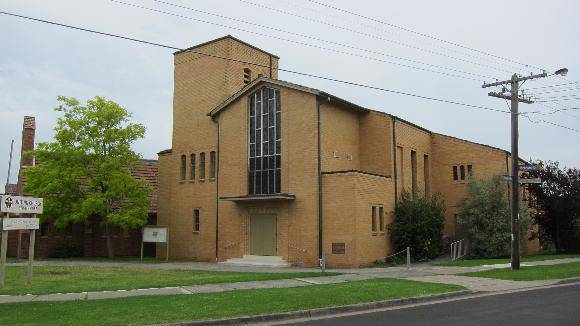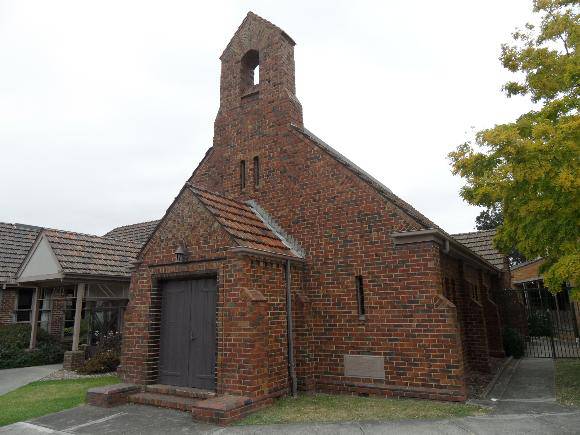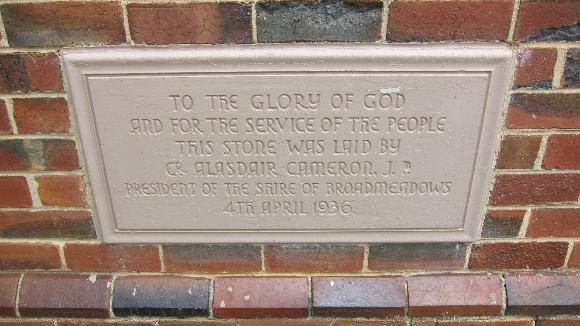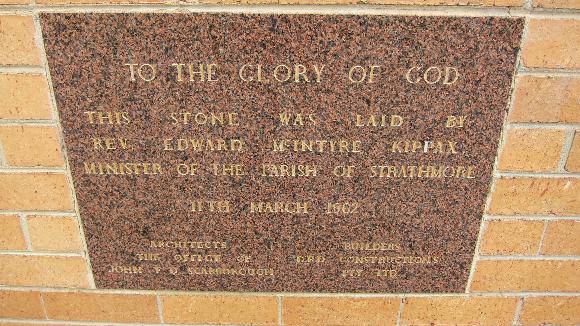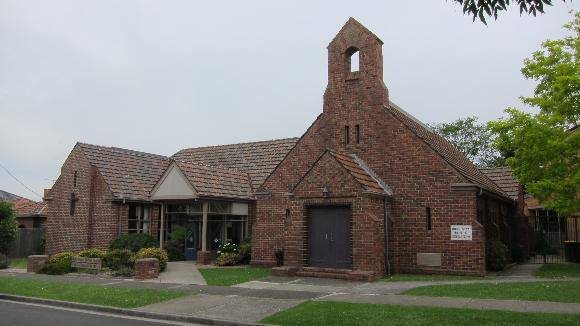| Back to search results » | Back to search page » |
|
STRATHMORE PRESBYTERIAN CHURCH COMPLEX (FORMER)
Other NameSTRATHMORE UNITING CHURCH COMPLEX Location15-19 THE CROSSWAY, STRATHMORE, MOONEE VALLEY CITY LevelIncluded in Heritage Overlay |
|
Statement of Significance
What is significant? The later kindergarten additions to the south of the 1936 church are
not significant.
How is it significant?
Why is it significant? Scarborough Robertson and Love are perhaps best known for their
winning competition entry for their fine Littlejohn Memorial Chapel at
Scotch College, but the firm also completed a number of churches
throughout the metropolitan area. John D Scarborough (1901-1971) is a
highly regarded architect in his own right and a prominent contributor
to the architectural profession throughout the1940s and '50s as
President of the RVIA, as Fellow of the RVIA and RIBA and Life Fellow
of the RAIA. (Criterion H) The Strathmore church complex represents a cohesive building group by
noted architects Scarborough Robertson and Love, and their principal
architect John D Scarborough, over a period of thirty years. The
community hall of 1936 and the church of 1962 share architectural
qualities in their use of plain face brick with elegant brickwork
detailing around doorways and windows and subtle articulation. The
primitive Gothic Revival style hall demonstrates the interwar period
of stripped back historicism whilst the 1962 church is an excellent
example of a more free form interpretation of historical styles.
Important features of the hall are the use of face clinker brick, the
entry doors with their simplified 'linen-fold' joinery and the
bellcote that dominates the front elevation. The 1962 church relies on
a skilful arrangement of rectilinear volumes for its dramatic effect
through the uses of the truncated tower with row of windows, central
nave with shallow pitched roof extending to encompass side wings. The
composition is particularly effective as a corner building that
addresses both The Crossway and Upland Road. The church is an
excellent example of modernism that invents new forms of expression
from historical styles and is of architectural significance in its own
right. Together with the hall that demonstrates a more representative
design approach common to the 1930s; the whole complex forms an
excellent group of buildings, and one that is relatively uncommon in
Moonee Valley where an earlier church building is retained on the same
site rather than demolished to make way fro the new church. (Criterion
E). The Strathmore Uniting Church complex as the ongoing place of worship
following the formation of the Uniting Church in 1977 is highly likely
to retain significant social value for the communities it serves
(Criterion G).
The Strathmore Presbyterian (Uniting) Church complex at the corner
of The Crossway and Upland Road, comprising the Presbyterian Community
Hall of 1936 designed by Scarborough Robertson and Love, and a 1962
church designed by John D Scarborough are significant.
The church complex is of local historical, aesthetic and social
significance to the City of Moonee Valley.
The development of the site for the Strathmore Presbyterian
(Uniting) Church complex reflects a strong period of development in
Strathmore and North Essendon in the late 1930s following the
subdivision of the Magdala Estate and the development of Madel and
Columban avenues in the late 1920s, and The Crossway in 1930. The
larger church (1962) demonstrates the population increase (principally
in areas further north) in the post-war era. Originally established as
Upland Road Presbyterian, the site is an excellent example of the
provision of community facilities to serve the growing population of
the area. Originally designed as a community hall, the central
building in the Upland Road frontage, this was closely followed by a
Kindergarten and Primary School in the wing to the south. The
importance of education was later reinforced through the conversion of
this space to an Education Centre after 1964. Historically this
Strathmore church complex demonstrates to a high degree the
establishment and growth of the Presbyterian (later Uniting) Church in
the area. (Criterion A)
Group
Religion
Category
Church


